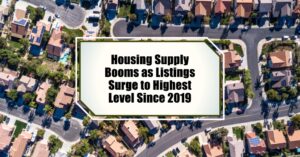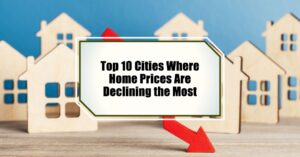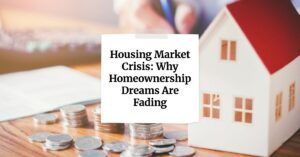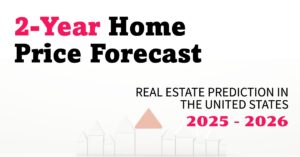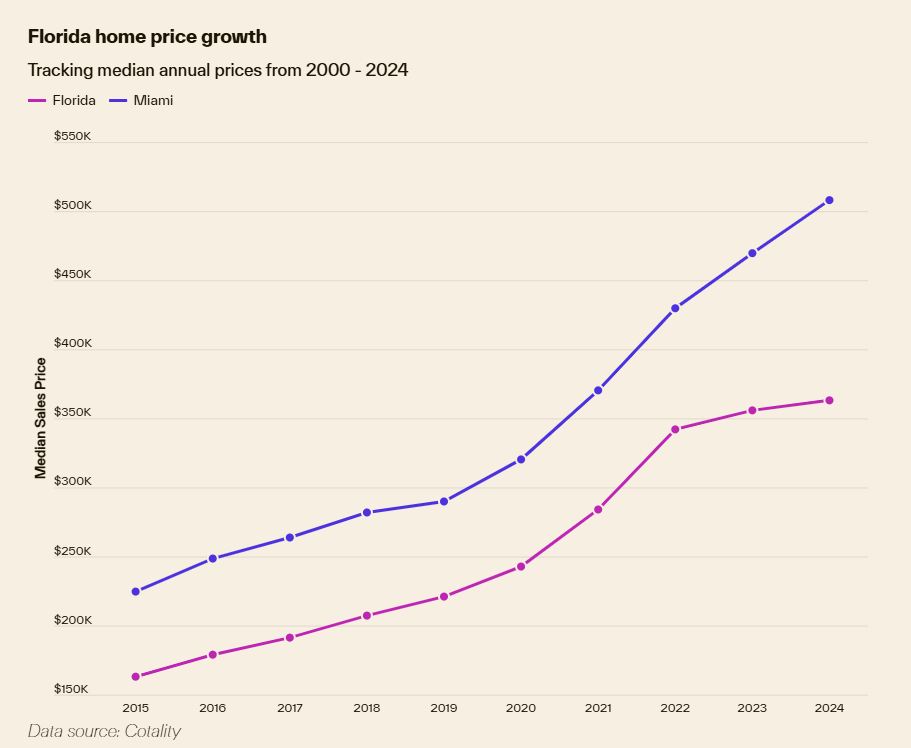Looking for the best places to invest in single-family rentals in 2025? You've come to the right place! Based on a new report by ATTOM, the top 10 counties for buying single-family rentals in 2025 offer a sweet spot of wage growth and attractive rental yields. Keep reading to discover which counties made the list and why they're poised for success.
Best Places to Invest in Single-Family Rental Properties in 2025
Why Single-Family Rentals?
Before we dive into the specific counties, let's quickly recap why single-family rentals (SFRs) are a popular investment choice. They offer several benefits:
- Consistent Cash Flow: Rental income provides a steady stream of revenue.
- Appreciation Potential: Real estate tends to increase in value over time.
- Tax Advantages: Depreciation, mortgage interest, and other expenses can be tax-deductible.
- Tangible Asset: Unlike stocks or bonds, you can physically see and manage your investment.
However, not all markets are created equal. Finding the right location is crucial for maximizing returns and minimizing risks. Factors like job growth, population trends, affordability, and local regulations can significantly impact the profitability of an SFR investment.
The Big Picture: Rental Yields in 2025
ATTOM's Q1 2025 Single-Family Rental Market Report paints an interesting picture of the SFR market. Across the 361 counties analyzed, the projected annual gross rental yield for three-bedroom properties in 2025 is 7.45%. While that's a decent return, it's slightly down from the 2024 average of 7.52%.
The report suggests that rental yields are expected to decline in nearly 60% of the analyzed counties between 2024 and 2025. This is largely due to home prices increasing faster than rents in many areas. In fact, median single-family home prices rose faster than median rents in 54% of the markets studied. Between 2024 and 2025, median single-family home prices have risen in approximately two-thirds of the counties with sufficient data, typically increasing by around 10%, which is a big factor.
This means that as an investor, you need to be extra selective and strategic when choosing your next rental property.
How Were the Top 10 Counties Selected?
To identify the top counties, ATTOM looked for areas where:
- Wage Growth is Positive: Rising wages indicate a healthy local economy and the ability for renters to afford higher rents.
- Projected Rental Yields are Attractive: A higher rental yield means a better return on investment.
The report specifically highlighted 28 “SFR Growth” counties where average wages increased over the past year and projected annual gross rental yields for three-bedroom properties in 2025 exceed 10%.
The Top 10 Counties for Buying Single-Family Rentals in 2025
Alright, let's get to the list you've been waiting for! Here are the top 10 counties, according to ATTOM's data, along with some additional insights:
- Suffolk County, NY
- Year-over-year wage growth: 7%
- 2025 Annual Gross Rental Yield: 18%
- Why it's great: Suffolk County, located outside of New York City, benefits from its proximity to a major employment hub while offering more affordable housing options. The strong rental yield and solid wage growth make it an attractive market for SFR investors.
- Atlantic County, NJ
- Year-over-year wage growth: 2%
- 2025 Annual Gross Rental Yield: 18%
- Why it's great: Atlantic City may be what you think of when you think of Atlantic County, but there are plenty of rentals that can be found.
- Jefferson County, AL
- Year-over-year wage growth: 9%
- 2025 Annual Gross Rental Yield: 16%
- Why it's great: As the home to Birmingham, Jefferson County boasts a diverse economy and a growing population. The combination of strong wage growth and a healthy rental yield makes it a promising market.
- Mobile County, AL
- Year-over-year wage growth: 5%
- 2025 Annual Gross Rental Yield: 19%
- Why it's great: Mobile's economy is driven by industries such as aerospace, shipbuilding, and manufacturing. The relatively low cost of living and attractive rental yields make it an appealing option for investors.
- Ector County, TX
- Year-over-year wage growth: 5%
- 2025 Annual Gross Rental Yield: 15%
- Why it's great: Ector County, home to Odessa, is a major player in the oil and gas industry. While this sector can be volatile, the area's strong job market and competitive rental yields make it a worthwhile consideration.
- Indian River County, FL
- Year-over-year wage growth: 2%
- 2025 Annual Gross Rental Yield: 12%
- Why it's great: Indian River County may be located in Florida, and the city itself may draw some tourists, but the lower wage growth is a little offsetting.
- St. Louis City, MO
- Year-over-year wage growth: 7%
- 2025 Annual Gross Rental Yield: 12%
- Why it's great: St. Louis City offers a mix of affordability, cultural attractions, and job opportunities. The strong wage growth and attractive rental yield make it a compelling market for SFR investors.
- Litchfield County, CT
- Year-over-year wage growth: Not Specified
- 2025 Annual Gross Rental Yield: 17%
- Why it's great: Litchfield County combines a rural setting with proximity to major metropolitan areas. The high rental yield, despite the lack of specific wage growth data, suggests a strong demand for rental properties.
- Charlotte County, FL
- Year-over-year wage growth: 4%
- 2025 Annual Gross Rental Yield: 16%
- Why it's great: With its beautiful beaches and sunny weather, Charlotte County attracts both tourists and retirees. The steady wage growth and solid rental yield make it a potentially lucrative market for SFR investments.
- Saint Clair County, IL
- Year-over-year wage growth: 8%
- 2025 Annual Gross Rental Yield: 16%
- Why it's great: Located near St. Louis, Saint Clair County benefits from a strong regional economy. The robust wage growth and attractive rental yield make it an appealing option for investors.
Beyond the Numbers: Due Diligence is Key
While these counties show promise based on ATTOM's data, it's important to remember that real estate investment is never a sure thing. Before making any decisions, you need to conduct thorough due diligence. This includes:
- Analyzing Local Market Conditions: Research vacancy rates, average rents, and property values in specific neighborhoods.
- Evaluating Property Condition: Inspect properties carefully for any potential repairs or maintenance issues.
- Understanding Local Regulations: Familiarize yourself with zoning laws, building codes, and landlord-tenant laws.
- Assessing Risk Tolerance: Determine how much risk you're willing to take on and invest accordingly.
I've seen too many investors jump into deals without doing their homework, only to end up with costly mistakes. Take the time to research and understand the market before committing to any investment.
My Personal Take:
In my opinion, while the data from ATTOM is a great starting point, it's crucial to consider your individual investment goals and risk tolerance. For example, if you're looking for a more stable, long-term investment, you might prioritize counties with consistent job growth and lower volatility. On the other hand, if you're willing to take on more risk for potentially higher returns, you might consider markets with emerging industries or rapid population growth. Also, visit the areas of interest and observe things yourself.
Final Thoughts
Investing in single-family rentals can be a rewarding way to build wealth and generate passive income. By carefully analyzing market trends, conducting thorough due diligence, and considering your personal investment goals, you can increase your chances of success.
The top 10 counties for buying single-family rentals in 2025, as identified by ATTOM, offer a compelling combination of wage growth and attractive rental yields. However, remember that these are just starting points. Always do your research and consult with experienced professionals before making any investment decisions.
Work with Norada, Your Trusted Source for
Real Estate Investment in the Top U.S. Markets
Discover high-quality, ready-to-rent properties designed to deliver consistent returns.
Contact us today to expand your real estate portfolio with confidence.
Contact our investment counselors (No Obligation):
(800) 611-3060
Also Read:
- Why Real Estate Can Thrive During Tariffs Led Economic Uncertainty
- Rise of AI-Powered Hyperlocal Real Estate Marketing in 2025
- Real Estate Forecast Next 5 Years: Top 5 Predictions for Future
- 5 Hottest Real Estate Markets for Buyers & Investors in 2025
- Will Real Estate Rebound in 2025: Top Predictions by Experts
- Recession in Real Estate: Smart Ways to Profit in a Down Market
- Will There Be a Real Estate Recession in 2025: A Forecast
- Will the Housing Market Crash Due to Looming Recession in 2025?
- 4 States Facing the Major Housing Market Crash or Correction
- New Tariffs Could Trigger Housing Market Slowdown in 2025
- Real Estate Forecast Next 10 Years: Will Prices Skyrocket?





